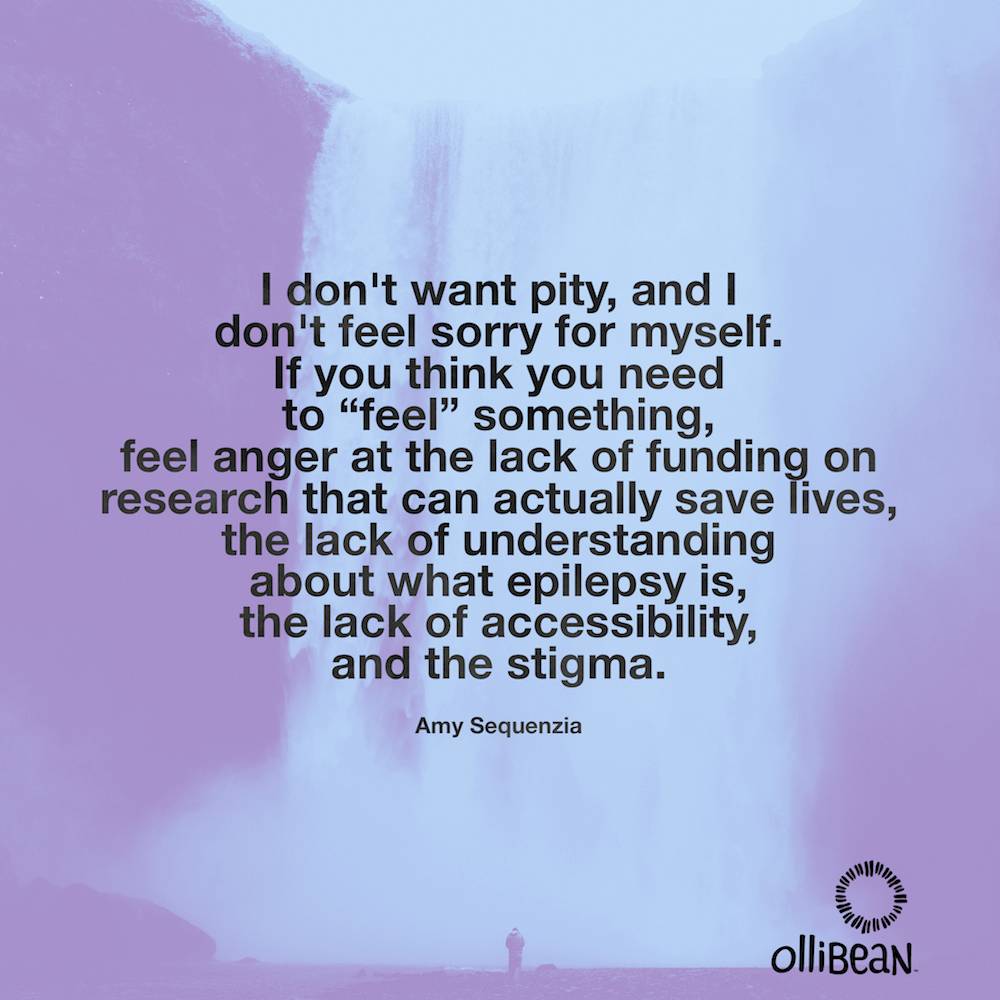
Epilepsy
I am writing this as, partly, a rant. I don’t want pity, and I don’t feel sorry for myself. If you think you need to “feel” something, feel anger at the lack of funding on research that can actually save lives, the lack of understanding about what epilepsy is, the lack of accessibility, and the stigma.
feel anger at the lack of funding on research that can actually save lives, the lack of understanding about what epilepsy is, the lack of accessibility, and the stigma
Epilepsy is Complicated
Epilepsy is complicated. It affects people in so many different ways, yet unique to each one of us, that there isn’t one treatment, or one medication, or one combination of medications that works for two people.
There are also many different types of seizures, each type affecting one, or more than one, part of the brain. Seizures can last from seconds to minutes, and they can kill. For epileptic people, anything can be a trigger and we spend a lot of energy trying to avoid them, when this is even an option. Sometimes it is not, because accessibility is a big problem.
Medication can help, usually a combination of meds. But this is also tricky because, more often than not, some medications stop working, and then we need to go on several trial periods until we, hopefully, find the right combination again. Some people can have some seizure control, at least for long periods of time. Others, like me, cannot find the right medication, so we have seizures very, very often.
Epileptic people live in constant fear, and constant hope.
Fear of when a seizure will happen and interrupt the seizure-free period.
Hope that the seizure-free period will last longer each time.
Fear that there will never be a medication that will give us some seizure-free period.
Hope that the next new medication will be “the one”.
Hope that a definitive cure for epilepsy is near.
Fear of dying when the next seizure comes.
Each person experiences epilepsy differently.
This is what living epileptic means to me:
I have seizures almost everyday despite all the medications I take. I have tried nearly every new medication, without success. I have also tried diets that didn’t work for me. The only times the meds were somewhat successful, the side effects were so severe, I had to stop them. The combination of meds I take now don’t control my seizures but keep me out of emergency rooms.
I have different types of seizures and they can be very short or quite long. This means that I never know how, and for how long, I am going to feel after a seizure. I am always tired and confused in the first few minutes of post ictus but the unpredictability of the seizures can make the effects last for days.
My seizures can come anytime. I cannot be left alone because I might fall and get hurt. I have broken my nose and some teeth a few times. I usually hold hands with a friend when walking because my seizures usually begin with a spasm. My friends can feel that and have time to support me before I fall. Sometimes one seizure can be so intense, and the post ictus so draining, that other seizures will follow. It is seizure triggering seizure.
There are many things that can trigger my seizures.
Extreme heat and extreme cold
Lack of sleep
Hormonal changes
Abrupt change in temperature
Some environment noises
Some lights
Emotional and physical stress
Even though some noises (like the noise of too many people talking in a crowded space), and some lights can trigger my seizures, I am not noise sensitive, nor photosensitive. I can deal with flash photography, the loud music and all the lights of a rock concert. Many epileptic people cannot, and this should be enough reason for not using flash photography without asking first, or to simply ban strobe lights in bicycles. Those are only two examples of accessibility.
Epilepsy Does Not Stop Me
Epilepsy doesn’t stop me from doing what I want but it can be very frustrating when seizures and post ictus interfere with my plans. It is frustrating when I cannot be at my best when meeting new friends. Sometimes I want to type more, interact more with my friends or with people who come to one of my conference presentations but just being there is already draining and doing more is not always possible (this in addition to the anxiety I normally experience during face to face interactions)
Then there are the side effects of the medications. Everything I do – physically – is hard. I feel dizzy, my limbs feel heavy, and my balance gets worse.
Everything I do – mentally – is draining. I need to focus on listening, or thinking, or looking. I have to choose One of the senses, ONE action. Sometimes I do need to completely disconnect from the outside world.
There is also the very real danger of my liver becoming so toxic, it will stop functioning properly.
I am Autistic, I like my neurodivergent brain. I don’t like seizures invading and attacking my brain and disturbing my process.
I am epileptic and epilepsy is part of me.
Epilepsy also pisses me off.
Note: As I said, I don’t want pity but I would appreciate if you took the time to learn at least the basics about epilepsy, and how you can help when you see lack of understanding and lack of accessibility.
Link to the Epilepsy Foundation website: http://www.epilepsy.com
There is good information there but the organization’s events are not always accessible (irony?)
An Autistic friend who is also epileptic has written a lot about it. These are two of the most recent ones. There are more in the Radical Neurodivergence Speaking blog.









Leave A Comment